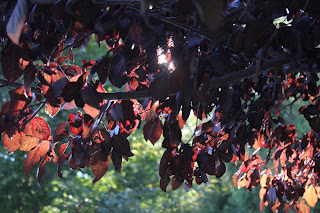Experience all comes down to personal occurrences. We
experience light through time and seasons. But, how we learn and experience
light all comes down to the places and environments we grew up in.
You cannot imagine something you have never seen or experienced.
Therefore if we as designers create a certain light effect or moment inside our
designs, it has most likely been inspired by something we have experienced
before. We as designers can
manipulate light in such a way that it “can make buildings be places that have
special meaning for us, extending their value beyond mere functional use”
(Reinhold 6). It all comes down to
our experience with light.
The spirit of a place can be determined by the light
surrounding or inside it. The regions we reside in determine the light patterns
we experience.
Growing up on a
island has definitely exposed me to a much different experience than someone
who grew up in the mountains or country side of North Carolina.
Bermuda is a twenty-one square mile island that is known for
always being sunny. On most days that is the case but we do occasionally have
our gloomy days.
Growing up I can remember always having to wear sunglasses
on the beach, not because its traditional to do so in such a setting but
because our sand is so purely white that the intensity of light reflected off
of it daily would damage our eyes. You would also get tanned much quicker on a
Bermudian beach as opposed to Mertle Beach because the mixture of light and
place allowed for the rays to be reflected at a much higher intensity than it
would be on the gray sand on the shores of North Carolina.
The region I grew up in also had a large play on light and
climate, Most of the time you could look outside and tell what kind of day it
was strictly based on the light quality we perceive. If the light is dull and
overcast, that usually means it is going to be a cooler day. Or if there are
clear skies and a high intensity of light that usually shows us that it is
going to be a much warmer day. Just through perception of light with the aid of
climate we can tell what kind of day it’s going to be.
However, I would only be able to make such accurate
assumptions because I have experienced days like those before. When we are
unfamiliar with an environment, we will automatically be unfamiliar with its
customs and all that surrounds it.
In design light has been separated into three types; ambient
luminescence, the play of brilliants and focal glow. All three types have been
pulled from nature. Ambient luminescence would be the way the sun glows behind
the grayish blue clouds in the early morning as it rises from the horizon,
illuminating everything around it yet there is no direct view of the source of
light.
Or the way sunlight dances on the calm Atlantic Ocean making
it seem as if it sparkled, would be nature’s play of brilliants.
A small bonfire seen from across a pitch-black beach would
be my personal example of focal glow.
Light is one of the most vital materials to design, without
it how would we see. We can create special moments with light, both artificial
and natural. Light has always and will always be present whether we acknowledge
it or not. But “we are most acutely aware of light when there is either not
enough of it, or” (Reinhold 30) there is too much of it, and our purpose as
designers is to ensure that the users obtains just the right amount to create
that special moment or experience.
Play of Brilliants (photographed by me)
Ambient luminescence (photographed by me)
Focal Glow (photographed by me)



No comments:
Post a Comment